The Software Development Life Cycle (SDLC) is the process of planning, designing, creating, testing, and deploying high-quality software at the lowest possible cost and, ideally, in the shortest time. To accomplish this purpose, software engineering teams must select the best software development model for their organization’s needs, stakeholders’ expectations, and the project at hand. There are a few software development models that you need to know
1. Waterfall model
Waterfall methodology is one of the most traditional software development life cycle approaches. As the name implies, the method entails progressing through the linear development phases in the following order: analysis, design, development, testing, deployment, and maintenance. Each stage has well-defined tasks and milestones. Because the Waterfall model is progressively linear, the next step cannot begin until the preceding one finishes. A stage completes when all objectives are met and a stakeholder signs off for the project to move on.
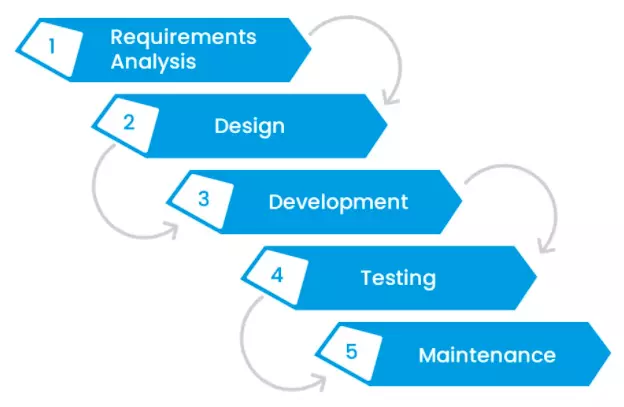
Pros
- Simple to apply
- Easy to manage and arrange tasks
- Clear deliverables and milestones
Cons
- Lack of flexibility (cannot skip, backtrack, or overlap the stages)
- Costly and time-consuming because the team can only make adjustments in the maintenance stage
- High risk of failure unless requirements are clearly understood
This model is perfect for:
- Simple, one-time projects with limited specifications and short deadlines
- Projects with clear, fixed requirements
- Projects that go under strict monitoring and rule compliance Examples: Small company websites, governmental/ healthcare projects, etc.
2. V-shaped model
The V-shaped model, also known as the Verification and Validation model, evolved from Waterfall and is defined by a testing phase for each development step. Each stage, like Waterfall, begins only after the preceding one has concluded. The verification process includes 4 phases: Requirement analysis, System design, Architecture design, and Module design. In turn, corresponding to each Verification stage is one Validation step, respectively, Acceptance test design, System test design, Integration test design, and Unit test design.
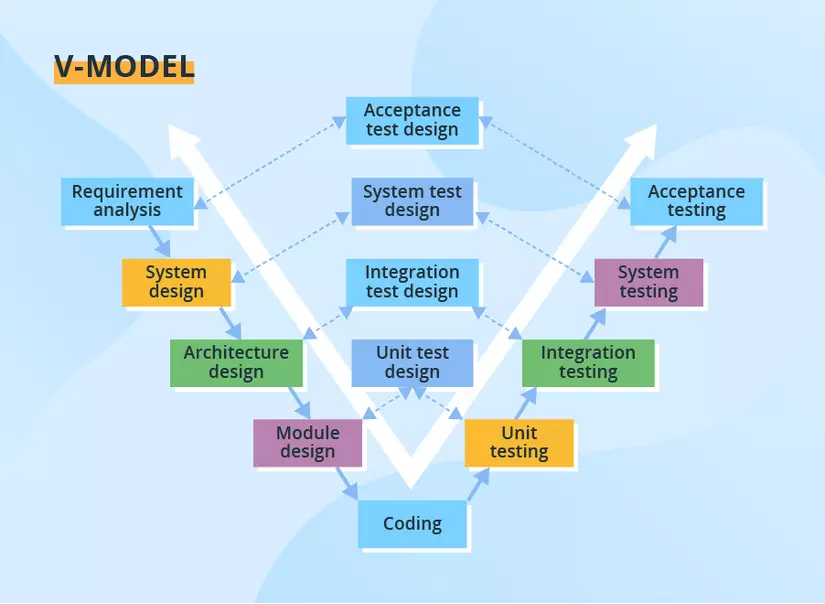
Pros
- Simple & straightforward
- Early detection of errors/ problems
Cons
- Lack of flexibility (like Waterfall model)
- Difficult, expensive, and time-intensive to make adjustments
This model can be applied for:
- Mid-sized and large projects with absolutely clear objectives & requirements
- Projects where failures and recesses are not accepted Examples: Medical software, aviation fleet management software
3. Spiral Model
The Spiral Model is primarily concerned with risk assessment. This software development model assembles a spiral with many loops in terms of diagrammatic presentation. Based on PMs’ risk assessment, the number of loops can be adjusted accordingly. Each loop represents a phase of the software development process divided into four quadrants: Planning, Risk Analysis, Engineering, and Assessment.
By applying this model, developers may adjust and add new features while minimizing risks via continuous and recurring development. The client reviews each phase of the cycle, which can be time-consuming for the development process due to customers’ slow response or deficient input. On the other hand, customer changes are not permitted during the engineering phase.
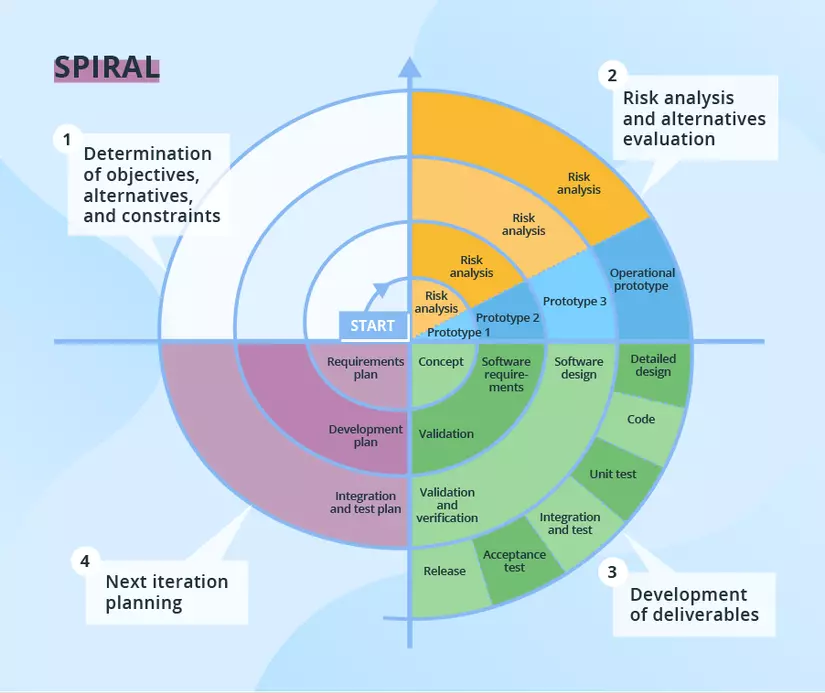
Pros
- Risk control
- Precise specifications, time & budget estimation, etc
Cons
- Require highly skilled risk managers
- Extensive resources
- Costly & time-consuming
This model should be suitable for:
- Large, complex projects with unclear or too ambitious objectives Examples: New products that need several testings, etc.
4. The Rational Unified Process (RUP)
Rational Unified Process (RUP) is an object-oriented software development procedure. The model involves four stages: Inception, Elaboration, Construction, and Transition. Except for Inception, each step is done in numerous cycles. All basic software development activities (requirements, design, etc.) are carried out parallel across these four RUP phases, albeit at varying intensities.
RUP facilitates the development of both stable and flexible solutions, although it is not as rapid or adaptive as the pure Agile group (elaboration below). Depending on the project requirements, the level of client involvement, documentation intensity, and iteration time may vary.
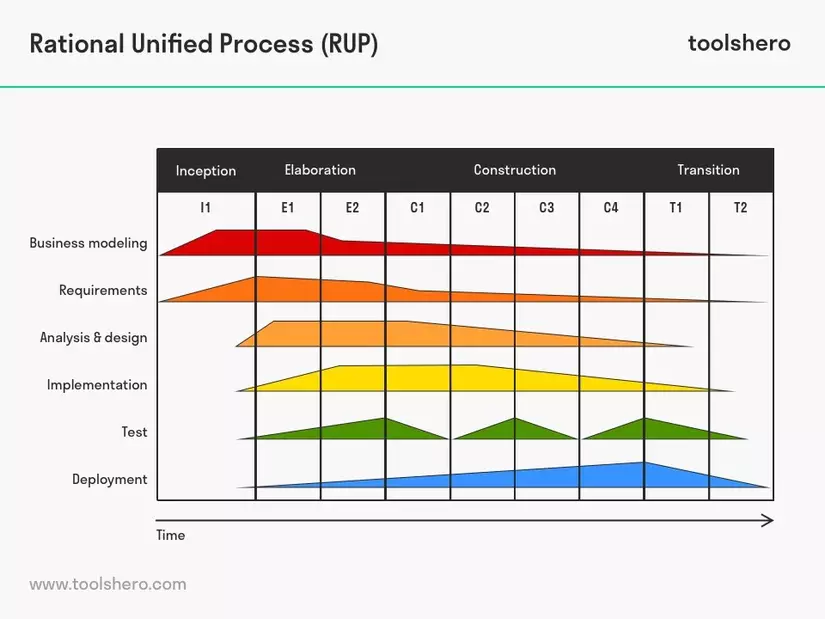
Pros
- Accurate documentation
- Allow flexibility
Cons
- Complicated process and slow progress
This software development model is the go-to model for:
- Large and high-risk projects, like use-case-based development and sophisticated software development Examples: Online learning management systems
5. Scrum model
Scrum is implemented in short and periodic blocks called sprints, which typically last for 2 to 4 weeks and involve feedback and reflection. Each Sprint is an entity in itself, delivering a definite outcome that builds up to the final product and can be handed over to the client when required.

The process begins with objectives/ requirements that comprise the project plan. The project’s customer prioritizes these objectives based on a balance of value and cost; this is how iterations and subsequent deliveries are defined.
6. Kanban
The lack of visible iterations is the primary differentiating aspect of Kanban SDLC. If there are iterations, they will be kept exceedingly brief, referred to as a daily sprint. The emphasis is on visualizing the plan. The team uses the Kanban board tool to display all project activities, the amount, the person responsible, and their progress. Such transparency aids in a more accurate estimation of the essential jobs.

Furthermore, the approach lacks a discrete planning step, allowing for introducing a new modification requirement at any moment. Kanban also enables the team to engage with the client regularly, allowing the customer to monitor the outcome of their work, and they may even arrange daily meetings with the project team.
The Kanban approach is employed in most software maintenance and evolution projects because of its qualities.
7. XP (Extreme Programming)
In XP, a typical repeat lasts 1-2 weeks. It also enables revisions after the iteration’s launch if the team has not previously dealt with such tools. This adaptability complicates the supply of high-quality software. XP needs pair programming, test-oriented development and test automation, continuous integration (CI), limited releases, simple software architecture, and rules combined with coding standards to solve the problem.
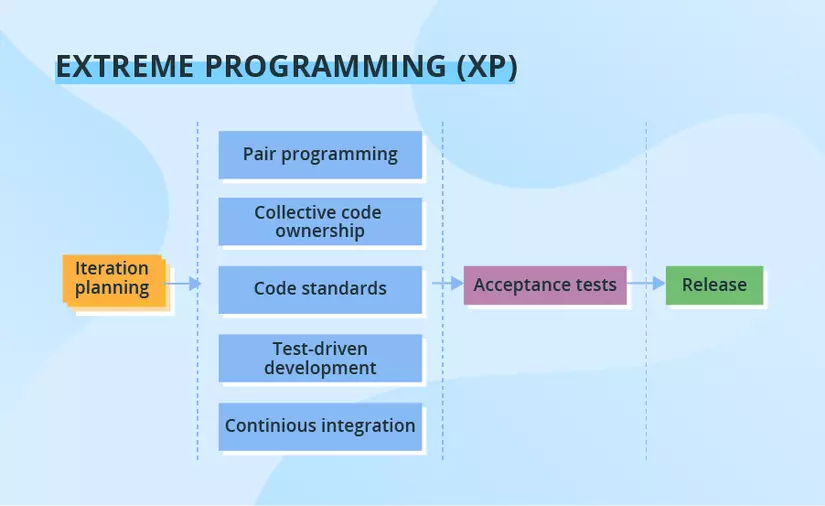
In conclusion: What software development model to choose for your project?
Based on several factors like requirements, existing organizational process, product owner involvement level or timeline, and budget, each project would need a different development model.
Read more about software development at: